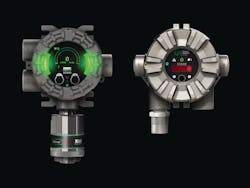Gas Sensor Innovation: Self-Calibrating Technology Is Here
The United States Occupational Safety and Health Administration (OSHA) defines industrial hygiene as “the science of anticipating, recognizing, evaluating, and controlling workplace conditions that may cause workers’ injury or illness.” Simply put, it is the professional study of worker protection. One of the major concerns of industrial hygiene is the identification and control of hazardous atmospheres.
Hazardous atmospheres may arise in the workplace from a variety of causes and may contain asphyxiating agents, flammable or combustible gases, irritating, corrosive, or toxic gases and vapors. These environmental hazards are typically invisible to the body’s senses and pose a risk not only to worker safety, life, and health but to the continuous operation of a plant. However, reliable methods of hazardous gas monitoring can help to mitigate these substantial risks.
For most gas detectors currently available on the market, the only way to know their readings are accurate is to expose the instrument to a known concentration of test gas. This can be laborious, time-consuming (especially for inaccessible sensors), intrusive, and add to maintenance costs.
Read on to see how TruCal technology lowers the cost of ownership with improved sensor performance and less maintenance.
